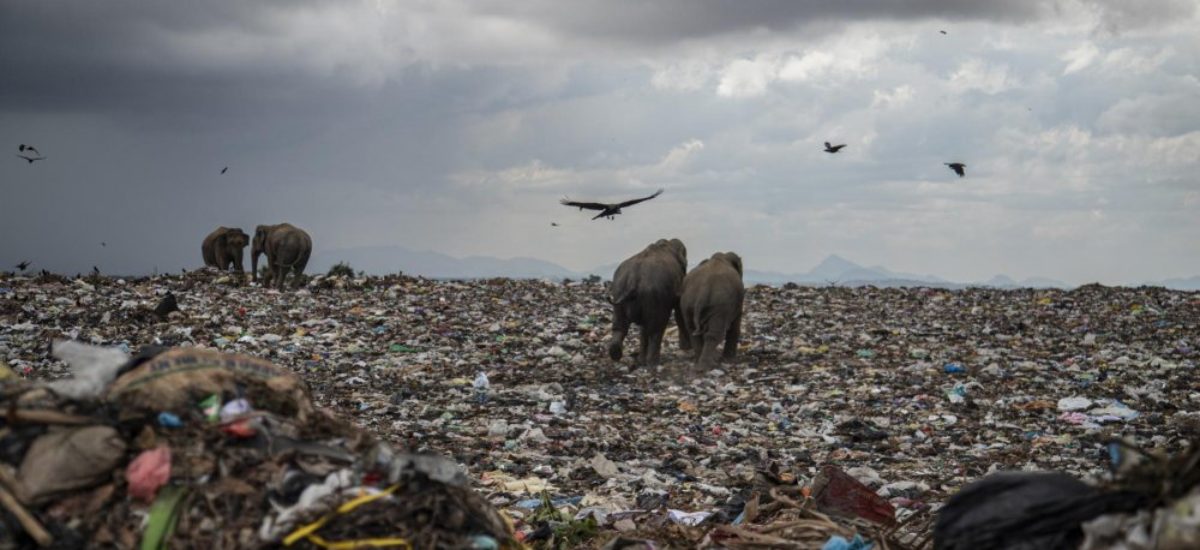Photo courtesy of Tharmapalan Tilaxan
Today is World Wildlife Day
“Ecocide is the destruction of the natural environment by deliberate or negligent human action.” Oxford Languages
Every day in Sri Lanka, newspapers, television and social media platforms cite examples of ecocide, a terrible crime that spells doom to the future of all life, human and otherwise. Senior representatives of the government encourage ecocide in the name of supposed social justice while the real benefactors of this wanton destruction are their financial allies, corporate entities who wish to exploit as much as they can from the land, as soon as they can, and with little care for what they will leave behind. All of this encroachment into protected areas, deforestation, building of roads and extraction of natural resources are in breach of the law, dismissed by mere political wish and decree. If these, the very foundations of social structure, are treated with such impunity, then what more lies in store for this nation?
No man is an island
Ecocide happens elsewhere too. Nature, in her kindness, has given us much warning of what she could do if we do not change our ways. That understanding has dawned on many a country (apart from, most notably, Brazil) and they have begun to make policies to reduce harmful actions that cause environmental destruction such as reducing the use of fossil fuels, stopping deforestation and reestablishing forests. In Sri Lanka, however, the authorities seem to have adopted the Brazilian policy of destroying forests for quick profit, while damning the future. In another Brazil-like action, they have even stolen the lands of the last remaining indigenous Sri Lankans, the Veddas, the oldest residents on this island who have the most rights to its sustenance.
Trees of life
One of the most important functions of the Department of Wildlife Conservation (DWC) is not that of protecting wildlife but protecting the major watersheds of this country. Forests, especially those of the mountains, are the sponges that draw the rain from the clouds. The lives of forests are intertwined with the wildlife they host; one an integral part of the other, needing each other to survive. Destroy one and the other will disappear too, and humanity soon after.
Like people, forests and the animals they host cannot survive in isolation. They need to have connectivity between them to ensure the health of both. This connectivity is not only important as avenues of travel along which wild animals can range but this movement is vital for the transfer of genes between one population and the next; it ensures that no in-breeding takes place and the next generation remains strong. This is not only so for fauna but for flora too, as some species only germinate once they have passed through the digestive processes of animals. These habitat ranges are vital for the spread of trees and plants too.
Priceless passages
If a snapshot is required of the possible consequences of ecocide on a region, one should look at the Uda Walawe National Park and the continuing destruction of the Dahaiyagala Elephant Corridor, the major artery along which the elephants and other wildlife move in and out of the park.
Uda Walawe had a reputation for being the one protected area in the world where one could see a wild elephant 20 hours a day, 365 days of the year. This was especially so during the months of drought when the reservoir bed still held water and there was plenty of grass on the tank bed that had been exposed by the receding waterline. It was not uncommon to see, of an evening, 200 to 300 wild elephants graze on the bed of the reservoir or drink water. Researchers have identified over 1,000 wild elephants using the park at various times during the year. They came in and out mainly through the Dahaiyagala Corridor. The number now visiting the park has reduced dramatically, mainly due to bad management and the spread of invasive alien species, Lantana camara, and of domestic buffalo. However, the elephants still do come in sufficient number to support a thriving wildlife tourism trade.
Destroying Dahaiyagala
The attempt to destroy Dahaiyagala first began in 2008 when a local politician and his henchmen illegally blocked off the corridor and tried to grab chunks of it for themselves. That effort was thwarted by the courts. Twelve years later, and this time with the patronage of the highest in the land, this same politician has instigated another land grab here. It is alleged that over 1,000 acres of the corridor has already been cleared for the building of a jungle resort by a politically sponsored businessman. All of this despite the fact that this is a legally declared wildlife sanctuary, re-confirmed by the court ruling of 2008. It seems that the law is now used as a mere advisory by the powers that be, to be ignored if it does not suit their purpose.
Trapping a community in poverty
The politicians concerned say that this land is to be given for chena cultivation. How is this going to improve the quality of life of the recipients? Chena farmers live in poverty and eke out a difficult existence from the land, especially those who live in the dry zone, as at Dahaiyagala. Their slash and burn practices soon deplete the fertility of the topsoil and the growing of crops becomes harder, especially during the many months of the seasons of drought when water sources deplete as well. Cutting the forests will reduce these sources even more – no water, no agriculture or even jungle resorts!
Once a harvest is reaped, farmers have to run the gauntlet of securing fair price for their goods in a market that is not favourable to them. The meagre pittance they derive from their months of hard labour barely meets their needs until the next harvest but that is precisely what politicians require – a financially castrated local populace who will be forever reliant on them for their handouts, especially at election time.
Yet there is a way for communities who live with wildlife as their neighbours to reap an economic benefit from both farming and from protecting the ecosystems that provide them with the means to survive. This is to be seen at Uda Walawe.
Where elephants feed people
Thirty years ago, Uda Walawe was hardly visited by the local, let alone, foreign visitor. There was one five bedroom guesthouse or one had to travel 15 km to Embilipitiya to find a place to stay. There were a few small village shops but not even a fuel station. Then people realized what a wonderful place Uda Walawe was, and not just for elephants but also for its birds, increasing sighting of leopards and its amazing vistas. Today, Uda Walawe has grown from the little hamlet it once was to a thriving economic hub that boasts over 125 hotels and guest houses of varying sizes and a burgeoning collection of shops and restaurants that cater to the thousands of visitors who now go there. It hosts over 400 safari jeep drivers. All of this economic boom is thanks to the Uda Walawe National Park, its elephants and its wildlife.
If the Dahaiyagala Elephant Corridor is blocked and elephants can no longer come in and go out of the Park, what will sustain this economy hereafter? I doubt many visitors would wish to travel to Uda Walawe to just look at acres of invasive alien species and at the starving elephants that would remain within its confines, just waiting to die.
What if Dahaiyagala was protected and the people who lived around were given the opportunity to benefit from the economic benefits of having wildlife as neighbours, as do those at Uda Walawe? Now that would be true social justice.
Killing the future
Travel to Uda Walawe and the effects of human encroachment and political shortsightedness are there to see. Apart from invasive alien species and the increased restrictions in moving in and out of the park, the politically sponsored invasion by domestic buffalo wreaks havoc on the grasslands and the food sources available for its elephants and other herbivores. Thousands of buffalo and hundreds of cattle overgraze the plains and reservoir beds, so little is left for the elephants. There used to be resident herds of elephants that numbered between 200 and 300, but this has halved. Those that are left are in terrible body condition, with skin and bones showing, and the mortality rate among calves will inevitably increase as their mothers produce insufficient milk for their sustenance. Whenever the DWC attempts to remove the domestic animals from the park since grazing them there is against the law, they are pressured by politicians not to do so for; to them, a vote today is better than a safe future for the country.
What has happened to the hundreds of elephants who used to be there? It is no surprise that human-elephant conflict has increased to record levels, with 420 elephants and 120 humans killed in 2019. With elephant corridors such as Dahaiyagala being blocked, this death toll will inevitably increase. Each death should be attributed to those who cannot see beyond the length of their lifespans while damning the future.
Sri Lanka needs development but it must be planned and sustainable and not on the whims of a politician, however elevated in status. It is the only way that Sri Lanka can have a future. The following quote applies to a country that has far less biodiversity than Sri Lanka but whose citizens are anxious to protect what they have left. It seems so apt for Sri Lanka today.
“The current legal regime allows states and corporations to despoil the environment with impunity. This injustice has inspired a new movement of legal experts and citizens calling for the codification of ecocide as a fifth crime against peace, joining genocide, crimes of aggression, crimes against humanity, and war crimes. Their work aims to transform our understanding of nature from property to an equal partner with humans in building sustainable societies. The political and enforcement hurdles are formidable, but an awakened and engaged citizenry, strengthened by the Paris climate agreement, may prove powerful enough to elevate the prevention of crimes against nature to an internationally recognized norm.”


